Note: Exhibit at Silvan Ridge Winery is being held over through September if you still want to see it. Also this Sunday, 2 pm - 5 pm a big crowd is expected for wine tasting and Richard Quigley's art exhibit (watercolors of Tikis), if you want to come out.
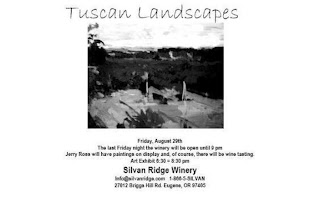
Before starting this session's lesson, let's review again the color pool concept with the benefit of some photos taken by Hugh:
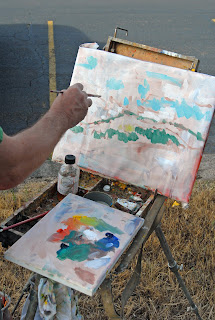
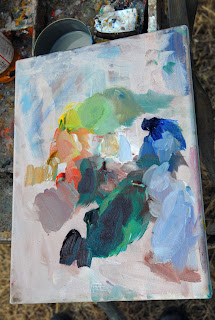
Note the use of an old canvas as a palette which is sometimes a good idea because you have a bigger surface to work on and the colors show up nicely when you create the mix. By placing white somewhere near the top of the pool you can access white and mix it into the pool as needed.
THIS WEEKS' TOPIC: Creating Atmospheric Perspective
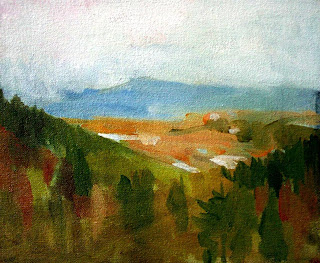

Each of these works creates a distant view, an added perspective, through the use of atmospheric perspective. To give the works a sense of the third dimension, colors become cooler in the distance and an object becomes lighter in value.
Many plein air painters say they are not really painting objects but rather air and atmosphere. The idea is to try can capture the atmosphere present and not to attempt to make a cloudy day into a bright cloudless one...try to capture the moment as it really is before you. Many of the works of Signorini and other great I Macchiaioli painters are depictions of merky or very atmospheric days. As Fall approaches and we have rainy or overcast days can actually be opportunities for you to paint atmosphere. Here is another example of a painting done from our last painting location at LCC that has an interesting cloud-filled sky:
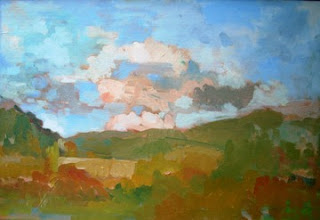
"View of Mt. Pisgah" (featured in DIVA exhibit opening Friday, Sept 5th)
If you are painting on a grey day, it is more important to present thr mood and feeling of that kind of day than to draw too much or paint too much detail. Use large and simple masses. Simplify shapes into a few brush strokes. Mute your colors and crreate soft edges by paining wet into wet and value into value. You can paint the sky first and then paint the distant hills into the wet sky. The two layers of paint will interact bluring the sharpness of the brushstroke and lightening the values.
Assignment: Go out painting on a cloudy day and try to emphasize these techniques of atmospheric perspective. Remember that it is much more than painting the distant hills blue or using lighter values. Don't let your large masses and shapes break up into myriads of little dabs. Group your lights and darks so that the painting has a focal point. Try to direct the viewer to one or two spots on the painting. But as you do this pay attention to the difference in colors near and far away. Use greys and smaller brushstrokes for the distant areas.
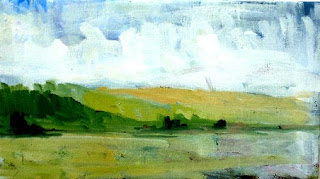
"Amazon Park"
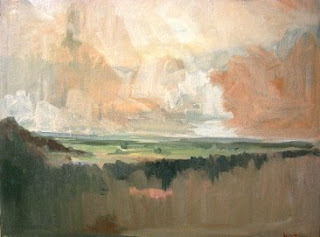
"Oregon Coast"
Note: the exhibition at Silvan Ridge has changed -- thanks to all who made it out there -- you can see the Tuscan landscapes, however, during the DIVA studio tour in October.
FYI: In case you haven't seen it yet, this months Alternatives Magazine is featuring my artwork on its cover. Its a portrait not a landscape, but you might want to pick up an issue. Here is a link that shows the cover:
http://www.alternativesmagazine.com/47/fall08.html










































